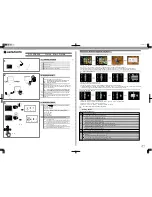
SVS-VISTEK
Feature description
65
6.3.7
Optical Input
In many trigger signals you find noise, transients and voltage spikes.
These are able to damage components in the camera and trigger signal
interpretation might be difficult.
An optical input seperates the electrical trigger and camera circuits. The
benefit of such an optical input is to avoid all these kinds of interaction
from power sources or switches. The disadvantage of an optical input is
that it is slower in terms of signal transmission and slew rate than a direct
electrical connection.
If you need super fast response from the camera, direct electrical access
is your choice. If your camera trigger is in the ms range or slower, we
recommend to use the optical input.
An optical input needs some current for operation. The SVS-Vistek optical
input is specified to 5-24V, 8mA.
The opto coupler galvanically separates electrical circuits by emitting light
on one side and interpreting light in the other. There is no direct electric
interaction between both electrical circuits.
Summary of Contents for HR Series
Page 1: ...2 06 2019 Manual HR Camera Link hr25 hr29 hr43 hr120 ...
Page 5: ...SVS VISTEK Safety Messages Contents of Camera Set 5 ...
Page 14: ...SVS VISTEK Connectors 14 ...
Page 64: ...SVS VISTEK Feature description 64 will reflect as following ...
Page 85: ...SVS VISTEK Dimensions 85 8 1 hr25 CL ...
Page 86: ...SVS VISTEK Dimensions 86 ...
Page 87: ...SVS VISTEK Dimensions 87 ...
Page 88: ...SVS VISTEK Dimensions 88 8 2 hr29 CL ...
Page 89: ...SVS VISTEK Dimensions 89 ...
Page 90: ...SVS VISTEK Dimensions 90 ...
Page 91: ...SVS VISTEK Dimensions 91 8 3 hr43 CL ...
Page 92: ...SVS VISTEK Dimensions 92 ...
Page 93: ...SVS VISTEK Dimensions 93 ...
Page 95: ...SVS VISTEK Dimensions 95 ...
Page 96: ...SVS VISTEK Dimensions 96 ...
















































